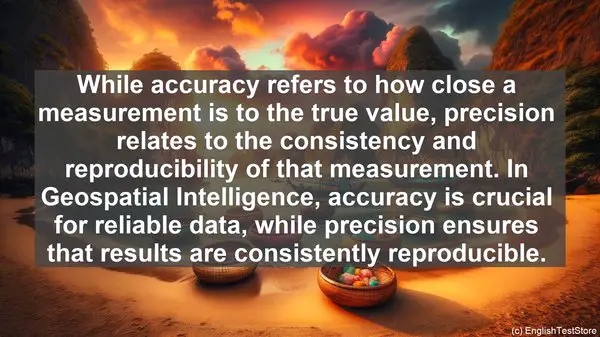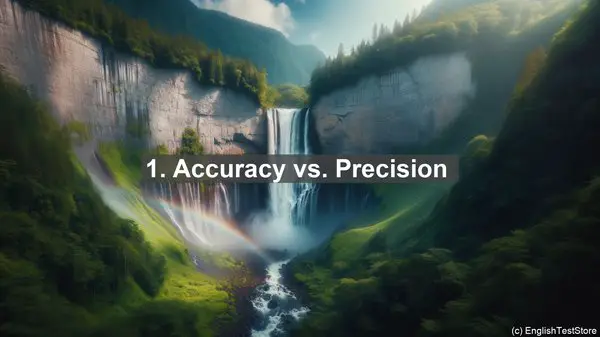Introduction
Welcome to today’s lesson on Geospatial Intelligence. In this lesson, we’ll be focusing on a topic that often trips up even the most experienced professionals: commonly confused words. Understanding these distinctions is essential for effective communication and analysis in the field. So, let’s dive in!
1. Accuracy vs. Precision
While accuracy refers to how close a measurement is to the true value, precision relates to the consistency and reproducibility of that measurement. In Geospatial Intelligence, accuracy is crucial for reliable data, while precision ensures that results are consistently reproducible.
2. Latitude vs. Longitude
Latitude and longitude are the two primary coordinates used to pinpoint a location on Earth. Latitude measures the distance north or south of the equator, while longitude indicates the distance east or west of the prime meridian.
3. GIS vs. GPS
GIS, or Geographic Information System, is a software tool used for capturing, analyzing, and visualizing geospatial data. On the other hand, GPS, or Global Positioning System, is a network of satellites that provides precise location information.
4. Remote Sensing vs. Aerial Photography
Remote sensing involves gathering data about the Earth’s surface without physical contact, often using satellites or aircraft. Aerial photography, as the name suggests, captures images of the Earth from above using cameras mounted on aircraft.
5. Georeferencing vs. Geocoding
Georeferencing involves aligning a dataset with a known coordinate system, allowing it to be accurately placed on a map. Geocoding, on the other hand, is the process of converting an address or place name into geographic coordinates.
6. Topology vs. Topography
Topology refers to the spatial relationships and connectivity between geographic features. Topography, on the other hand, focuses on the physical features and elevation of the Earth’s surface.
7. Vector vs. Raster
Vector and raster are two common data formats in Geospatial Intelligence. Vector data uses points, lines, and polygons to represent features, while raster data is made up of a grid of cells, with each cell containing a value.

8. Resolution vs. Scale
Resolution refers to the level of detail in an image or dataset. Scale, on the other hand, relates to the ratio between a distance on a map and the corresponding distance on the ground.
9. Metadata vs. Attribute
Metadata provides information about a dataset, such as its source, accuracy, and creation date. Attributes, on the other hand, are the specific characteristics or properties of a geographic feature.
10. Buffer vs. Overlay
Buffering involves creating a zone of a specified distance around a geographic feature. Overlay, on the other hand, combines multiple layers or datasets to create a composite map, often revealing patterns or relationships.

